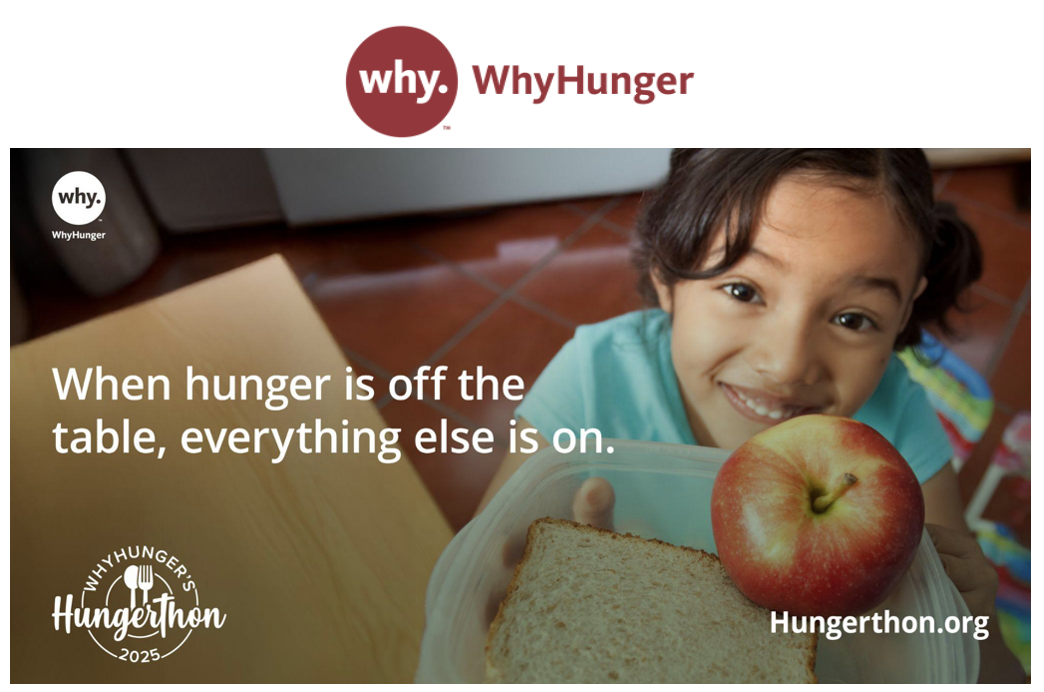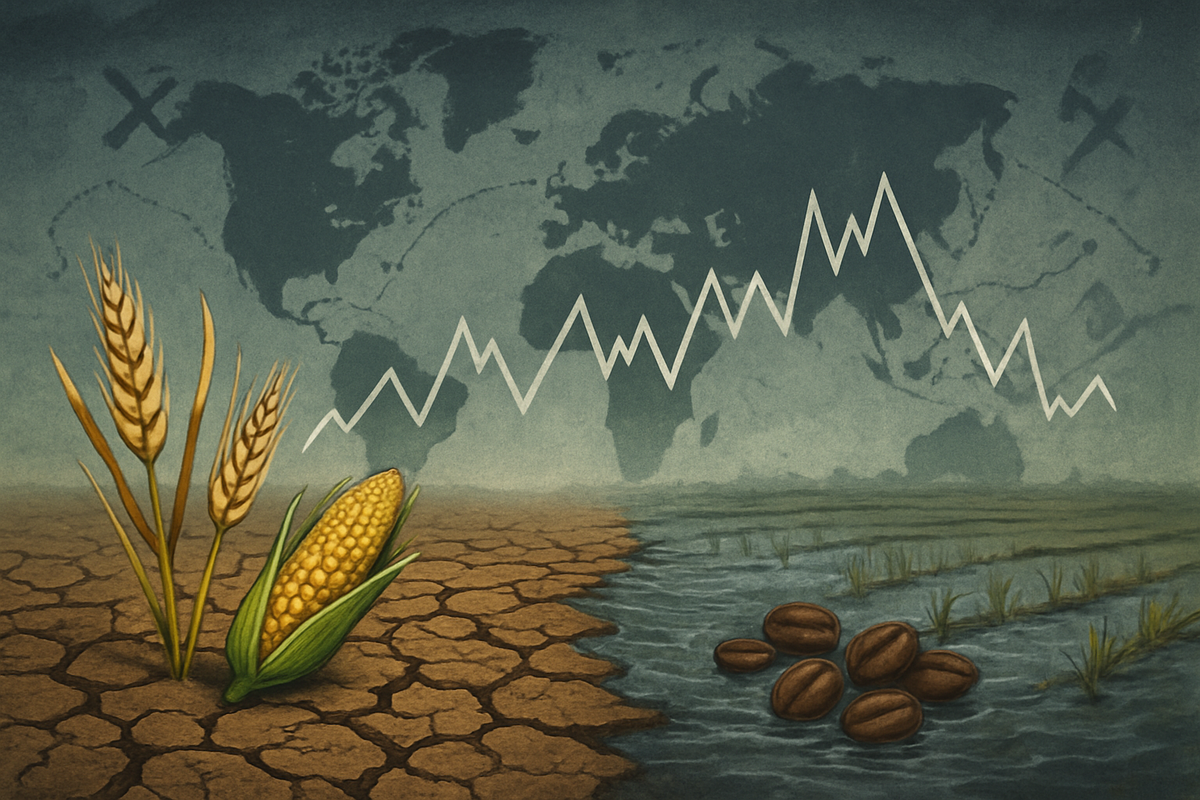WhyHunger Kicks Off 40th Annual Hungerthon Raising Funds & Awareness To End Hunger – Shore Fire Media

WhyHunger’s 40th Annual Hungerthon: A Multi-faceted Approach to Achieving Sustainable Development Goal 2 (Zero Hunger)
Executive Summary
The global nonprofit organization WhyHunger has initiated its 40th Annual Hungerthon, a comprehensive fundraising and awareness campaign designed to combat food insecurity and advance the United Nations Sustainable Development Goals (SDGs). This report outlines the campaign’s strategic initiatives, which directly support SDG 2 (Zero Hunger) by promoting the right to nutritious food, and further contribute to SDG 1 (No Poverty), SDG 3 (Good Health and Well-being), SDG 10 (Reduced Inequalities), and SDG 17 (Partnerships for the Goals).
Campaign Objectives and SDG Alignment
The Hungerthon campaign is structured to address the root causes of hunger, a crisis affecting nearly 50 million people in the United States, including 14 million children. The core objectives align with several SDGs:
- Achieve Zero Hunger (SDG 2): The primary goal is to end hunger and ensure access for all people to safe, nutritious, and sufficient food year-round.
- Promote Good Health and Well-being (SDG 3): By championing access to nutritious food, the campaign directly contributes to improved health outcomes.
- Foster Partnerships for the Goals (SDG 17): The campaign is built on a foundation of multi-stakeholder partnerships, uniting public, private, and civil-society sectors to achieve common goals.
- Reduce Inequalities (SDG 10): WhyHunger’s focus on community-led solutions and addressing systemic injustice targets the inequalities that perpetuate hunger.
Strategic Initiatives and Activities
WhyHunger has deployed a series of integrated activities to maximize public engagement and resource mobilization in pursuit of its SDG-aligned mission.
-
Leveraging Multi-Stakeholder Partnerships (SDG 17)
Strategic collaborations are central to amplifying the campaign’s message and impact. Key partners include:
- Media Partners: Longstanding relationships with SiriusXM and iHeartMedia New York provide a significant platform for awareness.
- Artist Ambassadors: Influential figures such as Bruce Springsteen, Yoko Ono Lennon, and SAINt JHN lend their voices to advocate for the cause.
- Corporate Sponsors: The Hungerthon Hustle event is sponsored by Bloomberg Philanthropies, SiriusXM, EY, Boost Mobile, and Citi Field, demonstrating corporate commitment to social responsibility.
-
Resource Mobilization and Fundraising
Financial contributions are critical for funding community-based solutions. Fundraising channels include:
- Exclusive Merchandise: Donors receive merchandise from artists like John Lennon, Bruce Springsteen, and SAINt JHN, creating a tangible incentive for contributions.
- Celebrity Online Auction: An online auction hosted by Charitybuzz, launching November 13, will feature autographed memorabilia and VIP experiences to generate significant funds.
-
Public Engagement and Awareness: The Hungerthon Hustle
To foster community involvement and highlight the scale of food insecurity, WhyHunger will host the 2nd annual Hungerthon Hustle 5K walk/run at NYC’s Citi Field on Giving Tuesday, December 2. Co-hosted by Marcus Samuelsson and co-chaired by Alysia Steinmann, the event promotes physical well-being (SDG 3) while raising awareness and funds to combat hunger (SDG 2).
Organizational Impact and Global Mandate
For five decades, WhyHunger has been at the forefront of developing community-led solutions to hunger. The organization’s work is a direct implementation of the principles underlying the SDGs.
- Proven Impact: In the last five years, WhyHunger has connected 5.3 million people to food and invested $10.8 million in community-led solutions. The 2024 Hungerthon campaign raised over $1 million.
- Global Reach: The nonprofit operates in 24 countries, advancing the human right to nutritious food and supporting agroecological practices that promote sustainable food systems (contributing to SDG 12: Responsible Consumption and Production).
- Commitment to Justice: As stated by Executive Director Jenique Jones, “Nutritious food is a fundamental human right, not a privilege.” This rights-based approach addresses the systemic injustices that are root causes of both hunger (SDG 2) and poverty (SDG 1).
Conclusion and Call to Action
The 40th Annual Hungerthon represents a critical initiative for advancing the 2030 Agenda for Sustainable Development. By integrating fundraising, strategic partnerships, and public awareness, WhyHunger effectively mobilizes resources to combat food insecurity. The campaign provides a clear pathway for individuals and organizations to contribute to a world with zero hunger.
Support resources and further information can be found via the WhyHunger Hotline at 1(800) 5-HUNGRY or by visiting Hungerthon.org.
Analysis of Sustainable Development Goals (SDGs) in the Article
1. Which SDGs are addressed or connected to the issues highlighted in the article?
- SDG 2: Zero Hunger: This is the primary goal addressed. The article is centered around the organization WhyHunger, whose mission is to “end hunger and the injustices that cause it” and “champion the right to nutritious food for all.” The entire Hungerthon campaign is designed to raise funds and awareness to combat food insecurity.
- SDG 17: Partnerships for the Goals: The article extensively details the collaborative nature of the Hungerthon campaign. It highlights partnerships between the non-profit sector (WhyHunger), the private sector (SiriusXM, iHeartMedia, EY, Boost Mobile, Citi Field), philanthropic organizations (Bloomberg Philanthropies), and civil society (artists like Bruce Springsteen, celebrity involvement). This multi-stakeholder approach is the essence of SDG 17.
- SDG 1: No Poverty: While not explicitly the main focus, SDG 1 is intrinsically linked to hunger. The article mentions the “injustices that cause” hunger and the challenges faced “in the face of safety net cuts,” pointing to the economic vulnerability and poverty that lead to food insecurity. Addressing hunger is a critical step in alleviating poverty.
2. What specific targets under those SDGs can be identified based on the article’s content?
- Target 2.1: By 2030, end hunger and ensure access by all people… to safe, nutritious and sufficient food all year round. The article directly supports this target by highlighting the problem of “nearly 50 million Americans facing hunger” and describing WhyHunger’s work to connect millions of people to food and champion nutritious food as a human right.
- Target 2.4: By 2030, ensure sustainable food production systems and implement resilient agricultural practices… The article mentions that WhyHunger’s programs have “expanded agricultural practices that are better for the planet” and that the organization champions “agroecological food production,” which directly aligns with this target’s goal of promoting sustainability in agriculture.
- Target 17.17: Encourage and promote effective public, public-private and civil society partnerships… The Hungerthon campaign serves as a clear example of this target in action. It is a large-scale partnership between a civil society organization (WhyHunger) and numerous private sector entities (SiriusXM, iHeartMedia, EY, etc.) to mobilize resources and awareness for a social cause.
3. Are there any indicators mentioned or implied in the article that can be used to measure progress towards the identified targets?
- Prevalence of food insecurity (related to Indicator 2.1.2): The article provides a direct quantitative measure of the problem by stating, “nearly 50 million people in America– including 14 million children – don’t get enough to eat.” The goal of the Hungerthon Hustle 5K is to “shrink the number and distance every year,” implying this statistic is a key performance indicator for their efforts.
- Financial resources mobilized (related to Indicator 17.17.1): The article quantifies the financial success of its partnerships. It mentions that “last year’s Hungerthon campaign raised more than $1 million,” the Annual Gala raised “over $600,000,” and WhyHunger has invested “$10.8 million in community-led solutions globally” in the last five years. These figures serve as direct indicators of the resources mobilized through their partnerships.
- Number of beneficiaries reached: The article provides a clear output indicator for its programs by stating, “In the last five years, WhyHunger has connected 5.3 million people to food.” This metric directly measures the impact and reach of their interventions in addressing hunger.
Summary Table of SDGs, Targets, and Indicators
| SDGs | Targets | Indicators |
|---|---|---|
| SDG 2: Zero Hunger | Target 2.1: End hunger and ensure access by all people to safe, nutritious and sufficient food. |
|
| SDG 2: Zero Hunger | Target 2.4: Ensure sustainable food production systems and implement resilient agricultural practices. |
|
| SDG 17: Partnerships for the Goals | Target 17.17: Encourage and promote effective public, public-private and civil society partnerships. |
|
Source: shorefire.com
What is Your Reaction?
 Like
0
Like
0
 Dislike
0
Dislike
0
 Love
0
Love
0
 Funny
0
Funny
0
 Angry
0
Angry
0
 Sad
0
Sad
0
 Wow
0
Wow
0




















































.jpg.webp?itok=0ZsAnae9#)
























